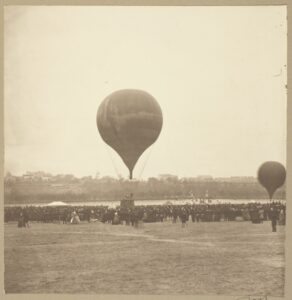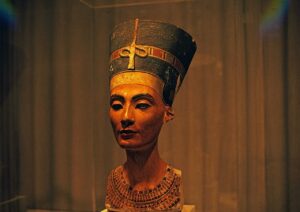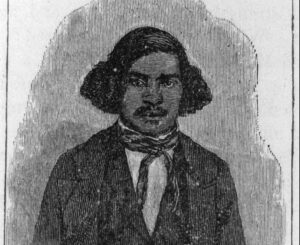Before Lonely Planet, Conde Nast, and Rick Steves, travel was a time-consuming and grueling process. Leisure travel was even rarer and was often reserved for intellectuals or the elites. Some of the world’s earliest travel writers viewed travel in the same way that many of us still do — as an opportunity to learn about other cultures and about oneself. Here are a few of these pioneering author-explorers.
Egeria
In 1884, Italian archaeologist Gian Francesco Gamurrini came across a manuscript which contained several ancient texts. One of these was the Peregrinatio Aetheriae (Tour of the Aetheria), also known as Itinerarium Egeriae (Itinerary of Egeria).
While the writer’s origins remain a mystery, the text documents the travels of a female pilgrim on her way to the Holy Land around 381-386 AD. It is the earliest example of a written account of a Christian pilgrimage and of travel writing in general.
Egeria wished to deepen her Christian faith by visiting famous biblical sites such as Mount Sinai, Mount Nebo, the Jordan Valley, Jerusalem, and even places where Christianity was growing, like Constantinople. Historians speculate that Egeria might have been a nun or a noble lay woman.
While it comes in the form of a letter to her friends or “dear ladies,” Egeria’s letter gives extensive detail on these foreign lands and the first observations of liturgical worship.
In an excerpt, she describes her experience visiting Mount Sinai. She wrote, “In the meanwhile, we came on foot to a certain place where the mountains, through which were journeying, opened out and formed an infinitely great valley, quite flat and extraordinarily beautiful, and across the valley appeared Sinai, the holy mountain of God.”
What made her writing so special was her ability to move so freely and deviate from plans, much like the spontaneity travelers often seek today. For example, she says, “When three full years had passed…I wished, at God’s bidding, to go to Mesopotamia in Syria, to visit the holy monks…”
Egeria’s account also has the bonus of informing linguists and researchers about the Latin of her era.
Herodotus
In 5th century BC, Herodotus of Halicarnassus wrote his famous History of the Persian Wars. This was not some boring historic tome about the conflict between the Greeks and Persians, but rather a complex work of travel writing. Herodotus takes us on his journeys to Egypt, Babylon, Arabia, Macedonia, Lybia, Syria, Susa, several Greek islands, and the Black Sea.

Marble bust of Herodotus. Photo: Metropolitan Museum of Art
With the backdrop of war, Herodotus uses these voyages to represent the differences between the Greek and Persian civilizations. He especially wanted to detail the land of the enemy for the reader.
Serbian scholar Svetozar Boskov states that, “although this is a historical work, it contains many characteristics of a travelogue.” He also points out that travelogues usually came in the form of sailor’s dairies.
Herodotus sourced information from various places, including personal interviews. He also shed light on smaller towns and gave a rounded picture what he saw for the reader. Remarkably, he appears unbiased in his approach.
Pausanias
The 2nd-century AD geographer Pausanias is often credited as being the world’s first travel guide writer. He wrote his Periegesis Hellados or Description of Greece in the hopes of encouraging foreigners, especially a Roman audience to visit the major sites, locations of great artworks, monuments and battlefields. Having been born in Asia Minor to a Greek family, Pausanias travelled extensively to the Levant, Italy and Macedonia but nothing compared to the deep sense of patriotism and love for his ancestral homeland.
He went into great depth about what Greece is like, ranging from the statues of Greek deities to the very roads on which he traveled. He had a particular fascination with art, rituals and cult activities. His extensive travels took him from Attica to the Acropolis in Athens, then Olympia and Delphi and beyond.

Pausanias’s Description of Greece. Photo: Biblioteca Medicea Laurenziana
He took in the geography of a region, its history, daily activities, architecture, art. His writing style is not too descriptive. Rather, it follows a general formula: He opens with a brief geography followed by a historical or mythological overview.
About the geography, for example, he writes, “On the Greek mainland facing the Cyclades Islands and the Aegean Sea the Sunium promontory stands out…You see a harbour and a temple to Athena of Sunium on the peak of the promontory.”
To gather all the information for his readers, he made inquiries, used local reports, oral tradition, and his personal observations.
The way Pausanias wrote about Greece suggested that this was similar to a pilgrimage for him. Pilgrimages were a common theme in the literature of the period.
Marco Polo
A household name in the realm of travel literature, Marco Polo was a Venetian merchant who took up the extraordinary challenge of visiting Kublai Khan in the 13th century. Inspired by the tales of his father and uncle, who regularly traded with Eastern merchants, he longed to see the East as well. His esteemed travelogue, The Travels of Marco Polo, documented his experiences across Asia over two decades.
The Travels of Marco Polo contains four main categories: first describes the Middle East and some parts of Asia, the second talks about China, the third Asian coastlines and four, regional conflicts. This was perhaps the first properly detailed account of the East, which Europeans viewed with wonder but also fear.
For example, he describes the “very great and noble” city of Suju. “The people are idolaters,” he writes, “ subjects of the Great Kaan, and have paper money. They possess silk in great quantities, from which they make gold brocade and other stuffs, and they live by their manufactures and trade.”

Marco Polo in a tartare outfit. Photo: Poivre d’Arvor
His experiences of staying in yurts, of living in the Mongolian court, traveling through some of the biggest deserts and highest mountains on earth, and seeing silk production transfixed travelers for centuries. Marco Polo’s fans included Christopher Columbus.
While Polo often exaggerated his descriptions and invented at times, particularly in his descriptions of strange animals or people, it gave Europeans their first glimpse into Eastern life.
Conclusion
Even in its infancy, travel writing held immense value that transcended mere entertainment. It essentially mapped the known world and provided information about trade routes, powerful kingdoms, peoples, religions, flora, and fauna. This newfound knowledge influenced and guided future expeditions.
Christopher Columbus often referred to the writings of Marco Polo in his quest for the Indies. Other writers like Egeria inspired faithful Christians to embark on their own pilgrimages. The writings of the Greek geographers gave the world an intimate look into Greek civilization and even gave accurate accounts of the countryside for future explorers. Undoubtedly, these early writings shaped exploration as we know it.






